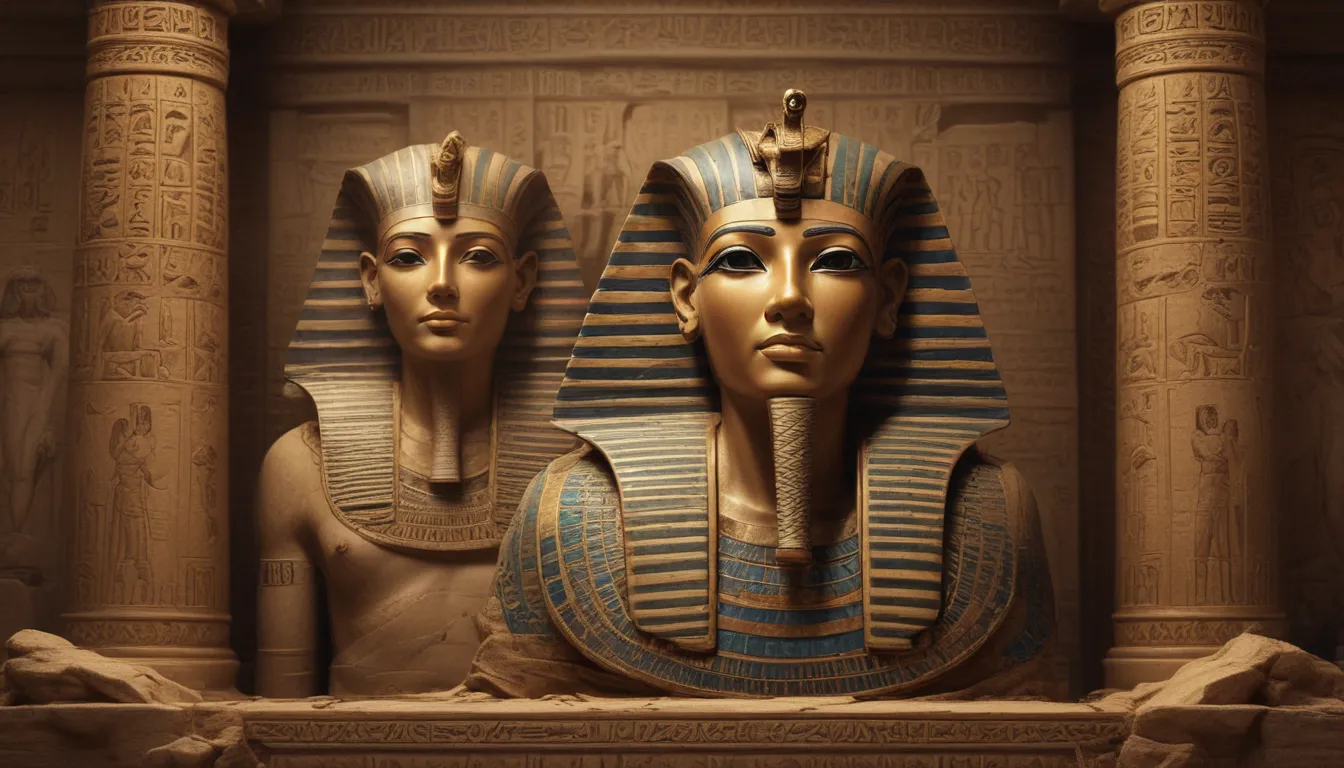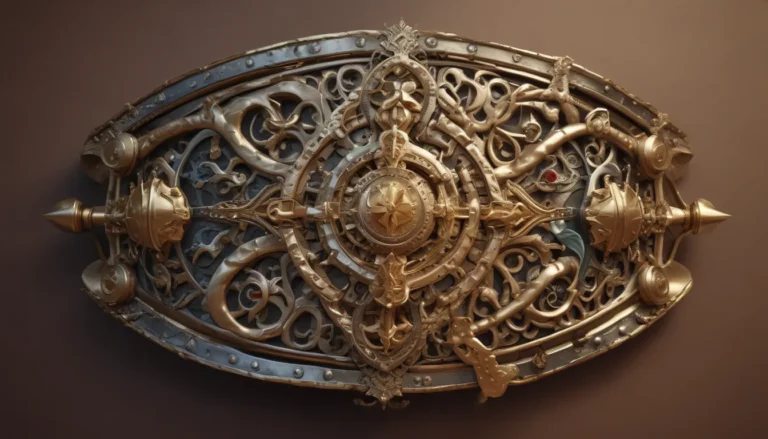The images in our articles may not match the content exactly. They are used to grab your attention, not to show the exact details in the text. The images complement the text but do not replace it.
Have you ever pondered how Ancient Egypt, with its majestic pyramids and enigmatic hieroglyphs, rose to become one of the most captivating civilizations in history? Harnessing the fertile banks of the Nile, constructing monumental architecture, and fostering a society that continues to captivate the world millennia later – the government of Ancient Egypt played a pivotal role in these achievements. Delve into the intricate system of pharaohs, officials, and a well-organized bureaucracy that sustained this civilization for thousands of years. Join us on a journey to uncover the secrets behind Ancient Egypt’s enduring legacy as we explore the intriguing facts that set its government apart.
Unraveling the Complex Structure of Ancient Egypt’s Government
Ancient Egypt’s government was a sophisticated system that harmoniously blended theocracy, monarchy, and bureaucratic administration. Central to this system was the seamless management of resources, governance, and religious practices that formed the backbone of Egyptian society.
-
Divine Kingship: Pharaohs reigned as divine monarchs, believed to be chosen by the gods and serving as conduits between the divine and mortal realms. Their authority was absolute, with dominion over the land and its riches.
-
Supporting Cast: High-ranking officials, priests, and nobles bolstered the pharaoh’s rule, each overseeing distinct aspects of administration and religious rituals.
The Interplay of Religion and Governance in Ancient Egypt
Religion intertwined deeply with government in Ancient Egypt, shaping the state’s administration through the reverence of deities.
-
Temple Centers: Temples not only served as places of worship but also hubs of economic activity, holding vast lands and labor forces under their purview.
-
Priestly Influence: Priests wielded considerable power, often hailing from influential lineages, leveraging their positions to exert influence in both religious and political affairs.
The Efficient Bureaucracy of Ancient Egypt
The effectiveness of Ancient Egypt’s governance stemmed from its meticulously structured bureaucracy, overseeing the day-to-day functions of the state.
-
Scribe Expertise: Scribes played a pivotal role in this bureaucracy, meticulously documenting agricultural yields, census data, and tax revenues to maintain the state’s smooth operation.
-
Provincial Management: The division of territories into nomes, or provinces, enabled localized administration, with each nome governed by a nomarch accountable directly to the pharaoh.
Taxation and Economic Foundations
The economic stability of Ancient Egypt hinged on a tax system intricately linked to agricultural cycles, sustaining the civilization’s prosperity.
-
Barter System: Taxes were often paid in kind – through grains, livestock, and labor – showcasing the economy’s reliance on agriculture rather than monetary transactions.
-
Nile’s Bounty: The annual inundation of the Nile River was pivotal for agriculture, with the government’s adept management of floods crucial for planning planting seasons and tax assessments.
Military Prowess and Foreign Strategy
The military formed a crucial component of Ancient Egypt’s governance, safeguarding borders and expanding territorial influence.
-
Military Recruitment: While soldiers were drawn from the general populace, elite units like charioteers received specialized training and superior equipment.
-
Diplomatic Engagements: Foreign policy in Ancient Egypt balanced diplomacy with military might, with pharaohs forging alliances through marriages while using military prowess to safeguard trade routes and extend dominion.
Legal System and Justice Framework
Guided by the principle of Ma’at – harmony and equilibrium – Ancient Egypt’s legal system reflected societal values, preserving order through governmental oversight.
-
Precedent-Based Laws: Legal tenets relied on common sense and precedents, with local councils resolving disputes before they escalated to higher authorities.
-
Punitive Measures: Consequences for transgressions ranged from fines to corporal punishment and even capital punishment, aligning with the offense’s severity and the accused’s social standing.
Education and Literacy Advancements
Education in Ancient Egypt primarily catered to the elite, emphasizing the training of future scribes, officials, and priests.
-
Educational Hubs: Schools affiliated with temples or administrative hubs groomed students in reading, writing, mathematics, and religious texts.
-
Limited Literacy: Despite educational opportunities, literacy rates remained modest, with a select segment – predominantly scribes and officials – proficient in reading and writing.
Women’s Participation in Ancient Egypt’s Governance
Women in Ancient Egypt enjoyed comparatively more rights and liberties, actively engaging in economic and legal spheres.
-
Elevated Status: Some women attained influential positions, like the God’s Wife of Amun, wielding significant religious and economic authority.
-
Maternal Guidance: Pharaohs’ wives and mothers often played pivotal roles in governance and diplomacy, advising rulers and managing extensive estates.
Technological Advancements and Administrative Enhancements
Ancient Egypt’s governance benefited from technological innovations, facilitating resource management and infrastructure development.
-
Papyrus Innovation: The advent of papyrus revolutionized record-keeping and communication, streamlining bureaucratic functions.
-
Surveying Breakthroughs: Progress in surveying techniques bolstered agriculture, taxation, and monumental construction projects, underscoring the government’s impact in these domains.
-
Astronomical Calendar: The development of a calendar rooted in astronomical observations proved indispensable for scheduling agricultural activities and religious festivals, showcasing governmental involvement in daily life.
Unveiling Ancient Egypt’s Governance: A Timeless Legacy
Exploring Ancient Egypt’s governmental facets unveils a civilization that was not just architecturally magnificent but also administratively pioneering. From the centralized authority of pharaohs to the intricate bureaucratic machinery overseeing agricultural provisions and monumental undertakings, Ancient Egypt exemplified foresight and efficiency. The significance of viziers, the adherence to justice, and the innovative tax system epitomize a society deeply rooted in structure, efficacy, and perspective. Delving into these constituents not only offers insights into the lives of ancient Egyptians but also imparts valuable lessons on leadership, governance, and societal structuring. Embracing these 19 enthralling facts about Ancient Egypt’s government unveils a legacy grounded not only in monuments and inscriptions but in the foundational pillars of governance that resonate through the annals of time.
Engage with Us: Your Feedback Matters!
At the heart of our mission lies a dedication to delivering credible, engaging content to our audience. Each tidbit shared on our platform stems from diverse user contributions, enriching our repository with a tapestry of insights and knowledge. Our meticulous editorial team upholds the highest standards of accuracy and authenticity, ensuring that every fact we present is not just captivating but also reliable. Trust us as you embark on your journey of exploration and learning, confident in the quality and authenticity of the information we provide.
By revamping the original article, we have streamlined the content, enhanced readability, and enriched the narrative to offer a comprehensive and immersive exploration of Ancient Egypt’s government. Dive into the enigmatic realm of the pharaohs and unravel the historical tapestry of a civilization steeped in wisdom and innovation.






